Opportunity Knocks
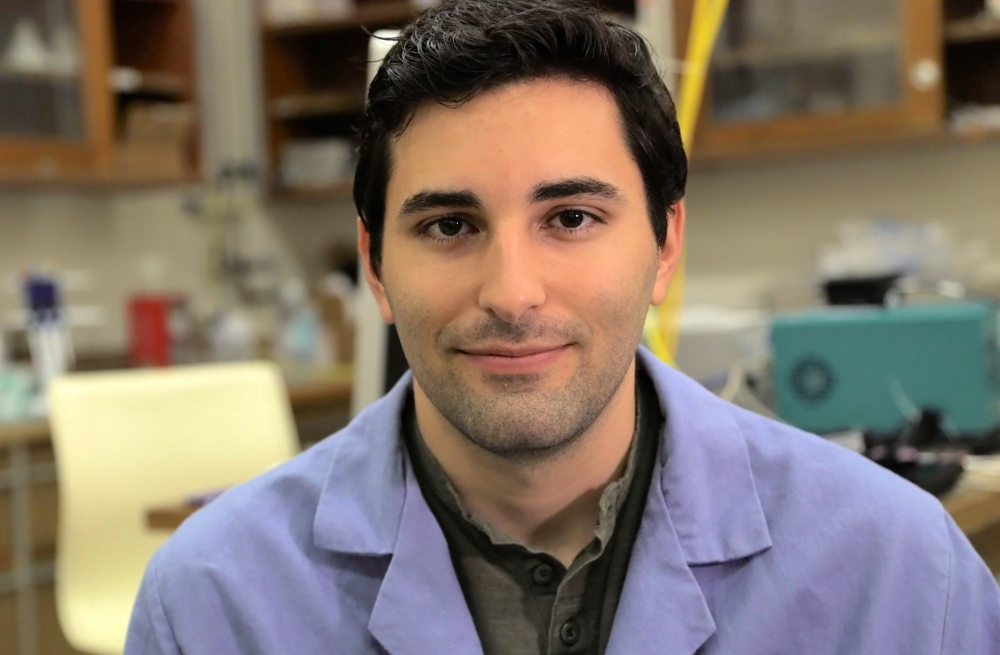
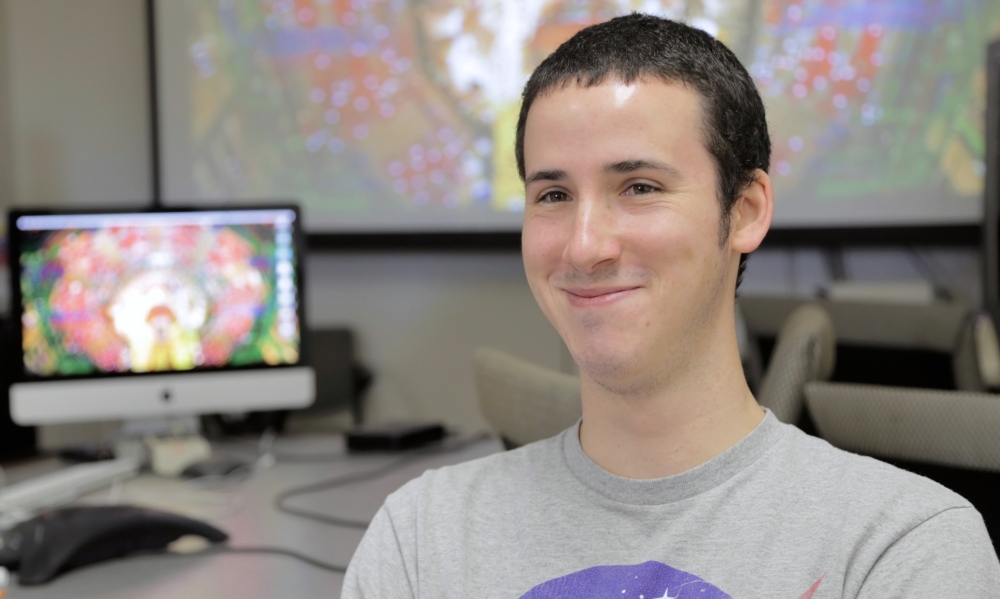
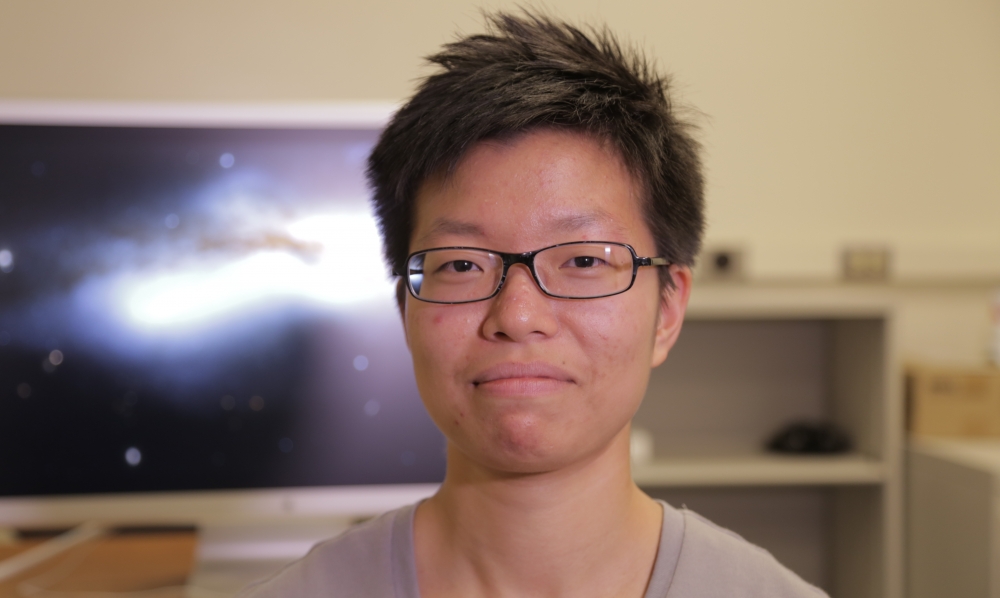
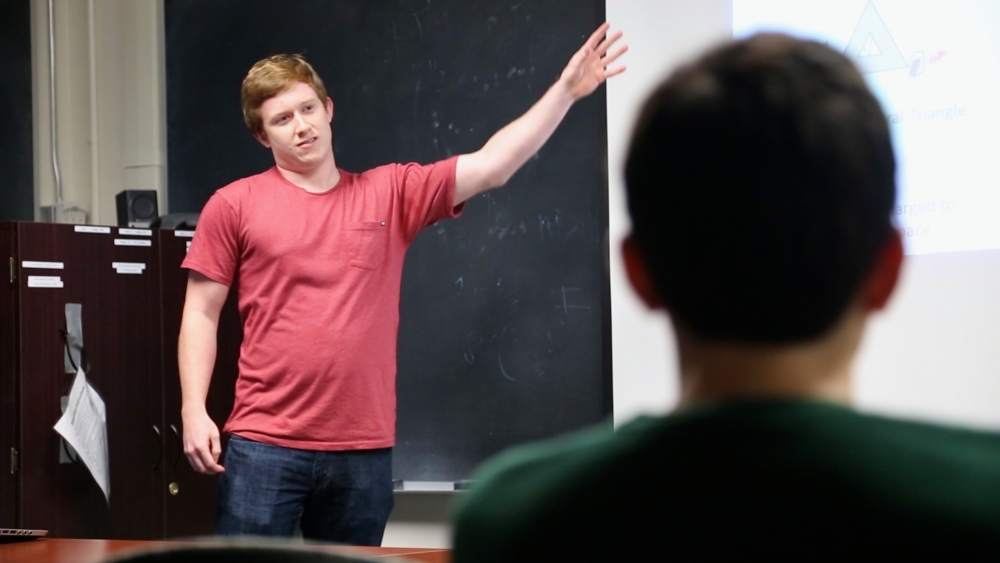
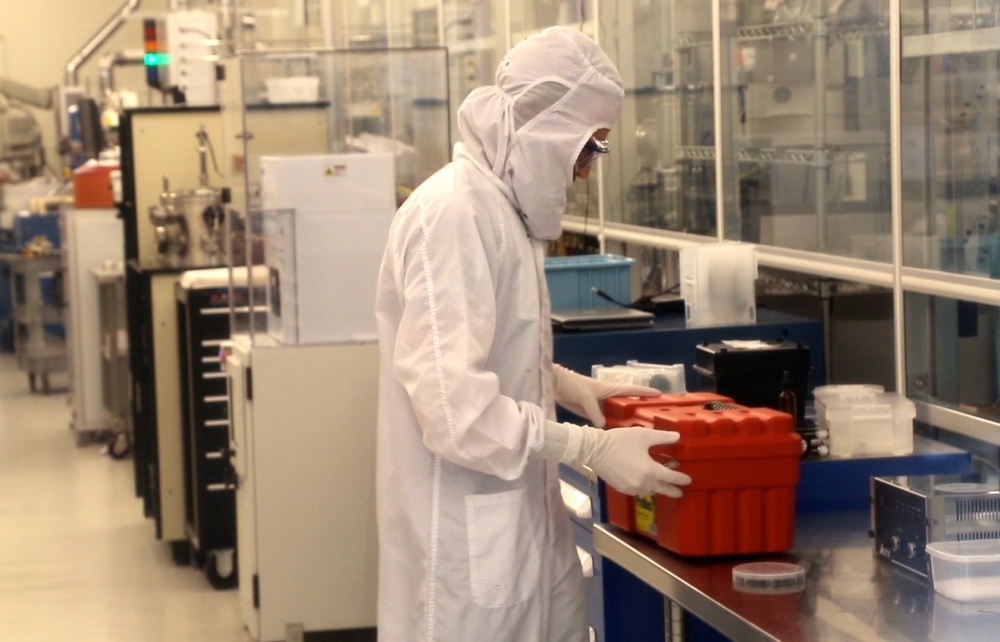
If college students wrote essays about what they did during summer vacation, the six participating in this year’s Worster Summer Research Fellowships at UC Santa Barbara would have amazing stories to tell. These undergraduate physics majors were paid to conduct 10 weeks of research — ranging from astrophysics to biophysics to theoretical physics — under the direct supervision of graduate student mentors.
Senior Ari Kaplan simulated different models and compared them to data generated by the Large Hadron Collider (LHC), where the Higgs boson was discovered. He was looking for the signature of a particular type of decay, which might confirm that supersymmetric particles exist and do not need to be produced in pairs.
Jackie Geler Kremer, a senior, spent her time in a wet lab searching for DNA-templated silver nanoclusters with the brightest fluorescence. She was looking for the best candidates to use for sensing and imaging applications.
Senior Joey Wong examined how heavy metals behave in merging galaxies — information that may offer hints about how the Milky Way and Andromeda will merge in a few billion years.
“This is my first summer involved with the Worster program,” said astrophysicist Crystal Martin, a professor in the Department of Physics. She supervised Wong’s research along with graduate student Stephanie Ho. “To me one of the great opportunities that big research universities can offer is not only helping students learn all that is known about a topic but also teaching young people to go out and create new knowledge and answer unsolved questions.”
This summer’s knowledge acquisition went far beyond the classroom. Sylvia Madhow, a junior in UCSB’s College of Creative Studies, learned computer programming and data analysis techniques in Ben Mazin’s astrophysics lab. “It’s wonderful that they compelled us to examine a much wider set of skills which we really need to be competent scientists,” said Madhow, who worked on a new technique for analyzing the readout from microwave kinetic inductance detectors (MKIDs) used for astronomy in the near infrared, optical, ultraviolet and X-ray.
“The things we do in lab are not necessarily coupled to what we do in class,” said Mazin, an assistant professor in the Department of Physics who invented MKIDs. “Basically we don’t teach computer programming and data analysis, so programs like the Worster Summer Research Fellowship offer one of the few ways to learn these very important skills.”
In addition to discovering the ins and out of teamwork, the undergraduates also learned how to present their work in a professional manner. Throughout the summer, they polished their oral presentations, which required them to hone their public speaking skills and refine their accompanying slide decks. The practice will pay off when the students present the results of their projects at a public symposium on Friday, Oct. 31, at 2 p.m. in 1414 Bren Hall.
While developing public speaking skills can be a challenge, junior John Devany felt it worth the effort. He worked in Deborah Fygenson’s biophysics lab analyzing single-molecule microarrays to better understand the process of synthesizing DNA-stabilized silver nanoclusters.
“I’ve learned a lot trying to explain my project in a really simple way,” said senior Philip Saad, who worked with physics professor Joseph Polchinski, also a permanent member of the campus’s Kavli Institute for Theoretical Physics. Saad studied string theory dualities, which exhibit two seemingly different systems that end up being equivalent on the quantum level.
The undergraduates were not the only students learning. Graduate mentors were able to expand their teaching skills beyond those required of a teaching assistant. They discovered that a different skill set was required to be a successful mentor.
“It was very rewarding to be a part of the Worster program,” said Alex George, a fifth-year graduate student working with professor Claudio Campagnari, an experimental high-energy physicist who works at the LHC. “I’ve been a TA for classes before, but it was a very different experience helping someone actually doing research at a very high level.”
Fifth-year graduate student Eric Mintun, who works with Polchinski and mentored Saad, agrees. “It’s a very different skill set to be able to provide useful guidance on a calculation without having explicitly done the work yourself,” Mintun said. “It’s good practice if I end up as faculty one day.”
Bruce and Susan Worster endowed the program that bears their name in 2011. This year’s participants bring the total number of fellows to two dozen. Graduate students whose thesis committees are chaired by physics faculty members are eligible to be mentors to declared undergraduate physics majors. Each team receives $5,500 — $1,000 for the graduate and $4,500 for the undergraduate, who is expected to pursue a senior honors thesis.
“The Worster program is really good because it gives a lot of independence to the students,” said Fygenson, an associate professor of physics and of biomolecular science and engineering, who has participated in previous Worster Summer Research Fellowships. “Because the grad student has to devise the project and the undergraduate has to co-author the project proposal, the Worster program fosters co-ownership and collaboration between the grad student and the undergrad in a way that the other summer research programs don’t.”
Worster Summer Research Fellowships are game changers for many participants. Erica Mason, a 2013 physics graduate, worked as a Worster fellow in David Weld’s lab in 2012, constructing an external cavity diode laser (ECDL). The ECDL is part of a larger assemblage of components used to ultra-cool strontium so it can be employed in future quantum simulation experiments.
“My experiences in the Weld Lab and the Worster program were very influential in my desire to pursue a future in physics research,” said Mason, who is enrolled in the Harvard-MIT Health Sciences and Technology program. “While my graduate program in medical engineering and medical physics differs significantly in application from my undergraduate research in optics and atomic and molecular physics, the process of research and much of what I learned are still very relevant.”
“Worster fellowships are a win-win-win for our department,” said Weld, an assistant professor in the Department of Physics. “Our top undergraduates get to participate in the world-class research being done at UCSB; our graduate students get valuable mentoring experience; and faculty get motivated and talented young researchers contributing to the work of their group.”



